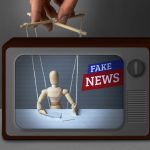Education
David J. Schleich, Ph.D.
How Palimpsests Explain Content Drift in Naturopathic Medical Curriculum
Naturopathic academicians have pretty consistent views on what the four-year ND curriculum is trying to do. Even though they often don’t couch their views in such theoretical academic parlance, our eight programs in North America harken back to Schon’s (1987, 1995) model of a “professional” education curriculum; that is, a curriculum that trains professionals for entry into their fields. Like most academic leaders, our Deans describe naturopathic medical education as a guiding and consolidating process that takes students through the basic medical sciences, biological and population sciences, and social and behavioral sciences, alongside the applied disciplines of natural medicine. Then, all of this content is conjugated either incrementally or in blocks through the clinical sciences and enriched as much as possible with sustained, infused patient-care experience.
These same naturopathic leaders voice concern that contemporary students are unrelentingly propelled through an ever-widening sea of scientific and clinical knowledge, correlating these with naturopathic theory and practice whenever possible. The content ranges from molecules to cells to organisms, from anatomy to pathophysiology to neurology, and from pharmacology to nutrition. At the same time, there are anxious retorts from elders who worry that the crushing load of clinical studies leaves less and less space for naturopathic applied sciences such as homeopathy, botanical medicine, naturopathic pediatrics and counseling psychology, among others. Adding to the confusion, learning priorities are also affected by the differences in scopes of practice between the states.
In such a landscape of contrary and shifting imperatives, who actually decides what gets included, in terms of content, competency, and theory, in naturopathic medical education? Do our Deans and their Faculty (many of whom are in active practice and teach as part-time adjuncts) primarily structure the content and its sequencing, respecting the standards set out by the Council on Naturopathic Medical Education (CNME)? Does the American Association of Naturopathic Medical Colleges (AANMC) play a role? Do the licensing and regulatory boards in states with naturopathic medicine legislation steer the curriculum ship in the end? Is it North American Board of Naturopathic Examiners (NABNE) whose expectations cascade down into Monday morning classrooms when all is told? My usual and favorite way of trying to demystify and connect complex, rapidly moving phenomena such as these is to default to metaphor. Permit me, then, to have us consider the idea of palimpsests to help explain what is going on.
A metaphor to the rescue
A palimpsest is a “parchment or other writing surface on which the original text has been effaced or partially erased, and then overwritten by another” (Simpson, 2000).
Thus, one text is written over another, but traces of the original remain. This happened a lot in the past. A millennium ago, before paper, parchment was made of processed animal skin (calves, sheep, goats); the favored of these was vellum, made from calf skin. Parchment was precious and scarce, so chemical agents would be used to erase existing text on a parchment and the newly clean parchment sheet was reused. The high cost and limited supply of vellum made this practice common. Over time, though, traces of previous writing on the vellum would re-emerge, creating a layered text or a “palimpsest.”
Naturopathic medical education can be considered a kind of palimpsest, dramatically affected in our time by the patinas of older ideas that lie underneath what we are writing down now. We have to look carefully to see what is underneath, but it is there, nonetheless. Using this metaphor, we can see in older writings on naturopathic philosophy and practice that naturopathic physicians have traditionally aligned themselves with nature, eschewing the heroic and invasive attributes of polypharma and reductionist diagnoses. Today, we see that many NDs in many jurisdictions are attracted to the “integrative medicine” movement, a movement that brings with it the whole package of biomedicine. Contemporary naturopathic medical education, then, is vulnerable to assimilation by the integrative policies and practices of our time, even though these new ideas are written over a tradition that is rooted in a belief in the necessity of collaboration with nature in the art and science of healing, a belief that won’t entirely disappear.
Pushing this metaphor a bit more, I contend that biomedicine’s academic content and structures inform our curricula through their placement in the most recent writing on our “professional education” tablet (Schon, 1987). In this way, the idea of the palimpsest becomes a useful figurative entity in the evolving literature on the politics and sociology of integrative medicine. Never mind the sheer arrogance of biomedicine in simply taking whatever modalities it wants, from botanical compounds to mind-body practices, despite having meanly vilified most such uses for decades; this overwriting is affecting our educators more and more. Thus, we have two layers in our naturopathic medical education palimpsests: our own traditions and contemporary medical science.
Flexner and Schon in the background
The concern about assimilation adds to the pressure on our educators. If we keep in mind Schon ‘s model, in which all professional education (whether for doctors, lawyers, architects or engineers) is structured in the same way (basic sciences, applied sciences and practicum), and if we acknowledge that contemporary naturopathic medical knowledge also benefits from the growing pool of medical science, we marvel that our Deans have any hair left on their heads at all. The pressure on curriculum content and learning outcomes become even more apparent when we reflect on Flexner’s 1910 report, sponsored by the Carnegie Foundation for the Advancement of Learning, and that Foundation’s latest iteration in 2010. Back in 1910, the Flexnerian “2 + 2” curriculum model—two years of basic science plus two years of clinical science—was announced. Backed by big money from the Carnegie and Rockefeller Foundations, this model took over the design and focus of medical education in North America and eventually across the world. Exactly one century after the original Flexnerian guidelines, the Carnegie Foundation for the Advancement of Teaching published Educating Physicians: A Call for Reform of Medical School and Residency (Cooke, Irby, & O’Brien, 2010), a study that accelerated the notion not only of integrated curricula but also of integrative medicine in North America.
The Schon model and the Flexner model have both been imitated by the naturopathic medical education community, although key content and professional competency outcomes differ. What is of note, in the patina of information in our palimpsest metaphor, is that issues such as population health, health policy or, more broadly, health and society, have only recently been showing up in allopathic models. As well, the non-material elements of health, ironically more quantifiable with modern scientific instruments, are increasingly co-opted by biomedicine. For example, where once energy medicine and mind-body-medicine were anathema to the allopathic doctors, these days it is de rigueur in such bastions of allopathic medicine as Sloan-Kettering and the Cleveland Clinic.
We can understand this accumulating “drift” a little more clearly by following the changes in academic medicine, most particularly in andragogy. Forty years ago, for example, Beane (1977) introduced the now widely used term integration (or integrative) and before long it found a beachhead in medical education (Harden, 1984, 2000). The notion is that “breaking down the barrier between the basic and clinical sciences improves connections between those disciplines and enhances graduates’ retention of knowledge and development of clinical skills” (Brauer & Ferguson, 2015, p.312). Alas, where does that leave naturopathic medical education and practice, which operate without the luxury of social and civil acceptance in almost two-thirds of the nation? The orthodox medical establishment controls almost every turnstile to health promotion and funding. That establishment is the one that has, as one social scientists reminds us, “ignored and thus tolerated the promotion of junk food, industries producing dangerous by-products, hazardous work practices, urban planning that reduces incentives and opportunities for exercise, and many other unhealthy aspects of everyday life, not to mention the massive level of iatrogenic disease” (Martin, 2004, p.716).
The work of Edmund D. Pellegrino can help us calm down in the face of these philosophically and ethically incongruent behaviors (individual biomedicine professionals, after all, are as committed to healing people and the planet as we are), not to mention the willful marginalization of the naturopathic profession, its values and its successes.
The bioethics of Edmund Pellegrino
Pellegrino, a scholar of bioethics and the philosophy of medicine, writes from within the mainstream higher education sector about familiar topics. His intended audience is his own academic colleagues, some of whom are in the status quo allopathic world. His insights, though, are written overtop (like a palimpsest) many of the statements and treatises our Naturopathic leaders and academics have espoused for a very long time. His ideas and themes ricochet through our eclectic conversations about the principles and philosophy of naturopathic medicine. As a case in point, Pellegrino’s original work on the healing relationship is a key component in his larger goal of placing humanism into the standard allopathic medical curriculum. In this regard, Pellegrino also writes about what he calls the “patient’s good” (Tristram Engelhardt, Jr., 2008, p.ix). Essentially, his lifetime scholarship is about “virtue-based normative ethics for health care” (Tristram Engelhardt, Jr., 2008, p.112). His abundant writings and the journal he founded, The Journal of Medicine and Philosophy, are rich resources for reflective NDs. On page after page, his writing is in deep agreement with the writings of Naturopathic leaders from long before his time.
The message for our educators is that changes in the biomedicine profession have affected the naturopathic profession, that we are following the same path. We may even be concerned that, in Pellegrino’s words, “the profession of medicine [has] [already] transformed from a guild to a trade” (Tristram Engelhardt, Jr., 2008, p.5). The symptoms of this transformation are echoed in what early and contemporary naturopathic physicians consider to be true of the dominant, orthodox biomedicine profession and the industries that have grown up around it. Among many more, Pellegrino identifies ten main challenges to the biomedicine profession.
They are familiar territory for naturopathic medical educators, too:
- Over-specialization and over-professionalization
- Technicism, characterized by too much science and not enough liberal arts and behavioral science
- Insensitivity to personal and sociocultural values
- Too narrow a construal of the doctor’s role
- Not enough emphasis on prevention, patient participation, and patient education
- Too much economic incentive
- Insensitivity to the poor and socially disadvantaged
- Over medicalization of everyday life
- Inhumane treatment of medical students and overwork of house staff
- Deficiencies in verbal and nonverbal communication
(Tristram Engelhardt, Jr., 2008, p.6)
In a landscape where evidence-based medicine is a mantra, and where presenting our therapies, modalities and research outcomes in scientific packages are important strategies for acceptance, some naturopathic educators do not hesitate to challenge the validity and utility of the science behind medicine. These colleagues inject sobering inquiry into the day-to-day unquestioning acceptance of research and clinical work defined by scientific investigation. Their voices reflect the concern of many of our students who have found their way to our programs, having chosen not to follow the path of orthodox medical professions, seeking instead to serve people and a planet hungry for holism without expensive, side effect-laden drugs and invasive protocols.
In defense of this perspective, one could visit Peter Medawar’s argument in “Is the scientific paper a fraud?” (1993) or the famous 1979 Herbert Spencer lectures (Heath, 1981) and be reminded that philosophy and science are perhaps no more compatible with medicine now than they were a century or more ago. In fact, there are those who would claim that, as we build the profession, we must not let the philosophical basis of contemporary naturopathic practice become shredded by a compelling need to move from the status of a heterodox medical system to an orthodox one, as has occurred, say, in the osteopathic profession. The biomedicine lobbyists in state legislatures formally attack naturopathic doctors as clinically heretical because we hold on to values and modalities that they find unacceptable, couching their claims in the jargon of science. They also write their treatises over the earlier work and ideas of naturopathic teachers and clinicians. The work of populist MDs such as Davis, Perlmutter, Cornish and Hyman is written on parchment long ago written on by naturopathic pioneers including Lust, Boucher, Fleming, Bastyr, Pizzorno, Hudson, Zeff and Kegler, just to name a few.
What some say is “dissent and heresy in medicine” (Martin, 2004, p.713) is really about the domination of the marginalized by the orthodox players whose privilege and power are hard to share. Even when the self-proclaimed language of biomedicine—the scientific method—is used to announce an important finding supporting some aspect of our medicine, those findings are often readily dismissed as unscientific and heretical. For example, Benveniste’s remarkable conclusion in support of homeopathy, that very dilute solutions “can have biological activity” (Davenas, et al, 1988), is flung into the land of heresy by orthodox authorities in the biomedicine profession, many of whom cannot imagine a reality or framework different from their own.
But, the palimpsest never lies.
A plurality of truths
Perhaps what our naturopathic educators need in their urgent upstream swim toward the integrative medicine universe is an assumption of a “plurality of truths” (Martin, 2004, p.715) in which “researchers and practitioners would be happy to help each other develop greater insights on a range of perspectives” (Martin, 2004, p.715). Alas, in the real world of biomedicine and naturopathic medicine, research and practice are characterized by rivalries and power plays (Boffey, 1975; Dickson, 1984; Greenberg, 1967). In such a world, we diminish ourselves by adopting strategies designed simply to defeat biomedicine politically, trying to gain what the MDs and DOs have and we don’t; that is, inherent advantage and control.
It will take more than, say, publishing outstanding research within the same epistemological sector as what Baer calls the “dominative, orthodox medical system” (Baer, 2001, p.43) to carve out a safe place in professional medical education in which our Deans and Faculty can operate successfully. Perhaps, as Martin suggests, we would be more successful simply by “competing for more market share” (Martin, 2004, p.716) and in lieu of “trying to compete on epistemological grounds, namely tackling orthodoxy on its own terms, to examine instead each of the methods by which orthodoxy maintains its position” (Martin, 2004, p.716). We have been doing some of this, and sometimes a lot of this, for decades, state by state, research article by research article, agency by agency, and patient by patient. We have worked for accreditation of our schools and programs via the CNME, for loan forgiveness for our graduates in certain jurisdictions, for presence in the media and public venues, and for corporate funding for research.
It is in our classrooms and teaching clinics, though, that the challenge is most immediate. To achieve the highest expression of health, our teachers must honor the founding principles of naturopathic medicine while at the same time studying the interactions between genetic, environmental and lifestyle factors and how they affect health. On the vellum of the profession’s literature are written principles that are timeless, and although much is written over top these days, those principles aren’t going away anytime soon.
References:
Baer, H. (2001). Biomedicine and Alternative Healing Systems in America. Madison, Wisconsin: The University of Wisconsin Press.
Boffey, P.M. (1975). The Brain Bank of America: An Inquiry into the Politics of Science. New York: McGraw-Hill.
Beane, J.A. (1977). Curriculum integration: Designing the core of democratic education. New York: Teachers College Press.
Brauer, D.G., & Ferguson, K.J. (2015). The integrated curriculum in medical education: AMEE Guide No. 96. Medical Teacher, 37, 312–322.
Cooke, M., Irby, D.M., Sullivan, W., & Ludmerer, K.M. (2006). American medical education 100 years after the Flexner report. N Engl J Med, 355(13), 1339–1344.
Cooke, M., Irby, D.M., & O’Brien, B.C. (2010). Educating Physicians: A Call for Reform of Medical School and Residency. San Francisco: Jossey-Bass (Wiley Imprint).
Davenas, E., Beauvais, F., Amara, J., et al. (1988). Human basophil degranulation triggered by very dilute antiserum against IgE. Nature, 333, 16–818.
Dickson, D. (1984). The New Politics of Science. New York: Pantheon.
Greenberg, D.S. (1967). The Politics of Pure Science. New York: New American Library.
Harden, R.M., Sowden, S., & Dunn, W.R. (1984). Educational strategies in curriculum development: The SPICES model. Med Educ, 18, 284–297.
Harden, R.M. (2000). The integration ladder: A tool for curriculum planning and evaluation. Med Educ, 34, 551–557.
Heath, A.E., ed. (1981). Scientific Explanation. Herbert Spencer Lecture. Oxford: Clarendon Press.
Kristeva, J., Roudiez, L.S. (1980). Desire in Language: A Semiotic Approach to Literature and Art. New York: Columbia University Press.
Martin, B. (2004). Dissent and heresy in medicine: models, methods, and strategies. Social Sci and Med, 58, 713-725.
Medawar, P. (1993). Is the scientific paper a fraud? In: The Strange Case of the Spotted Mice (pp.33–39). Oxford: Oxford University Press.
Schon, D. (1987). Educating the Reflective Practitioner. San Francisco: Jossey-Bass Publishers.
Schon, D. (1995). Knowing in action. The new scholarship requires a new epistemology. Change, Nov/Dec, 27–34.
Simpson, J., & Weiner, E. (2000). The Oxford English Dictionary. Palimpsest, n and adj. Oxford: Oxford University Press.
Tristram Engelhardt, Jr., H., & and Jotterand, F. (Eds.). (2008). The Philosophy of Medicine Reborn: A Pellegrino Reader. Notre Dame, Indiana: University of Notre Dame Press.
 David J. Schleich, PhD, is president and CEO of the National University of Natural Medicine (NUNM), former president of Truestar Health, and former CEO and president of CCNM, where he served from 1996 to 2003. Previous posts have included appointments as vice president academic of Niagara College, and administrative and teaching positions at St. Lawrence College, Swinburne University (Australia) and the University of Alberta. His academic credentials have been earned from the University of Western Ontario (BA), the University of Alberta (MA), Queen’s University (BEd), and the University of Toronto (PhD).
David J. Schleich, PhD, is president and CEO of the National University of Natural Medicine (NUNM), former president of Truestar Health, and former CEO and president of CCNM, where he served from 1996 to 2003. Previous posts have included appointments as vice president academic of Niagara College, and administrative and teaching positions at St. Lawrence College, Swinburne University (Australia) and the University of Alberta. His academic credentials have been earned from the University of Western Ontario (BA), the University of Alberta (MA), Queen’s University (BEd), and the University of Toronto (PhD).





